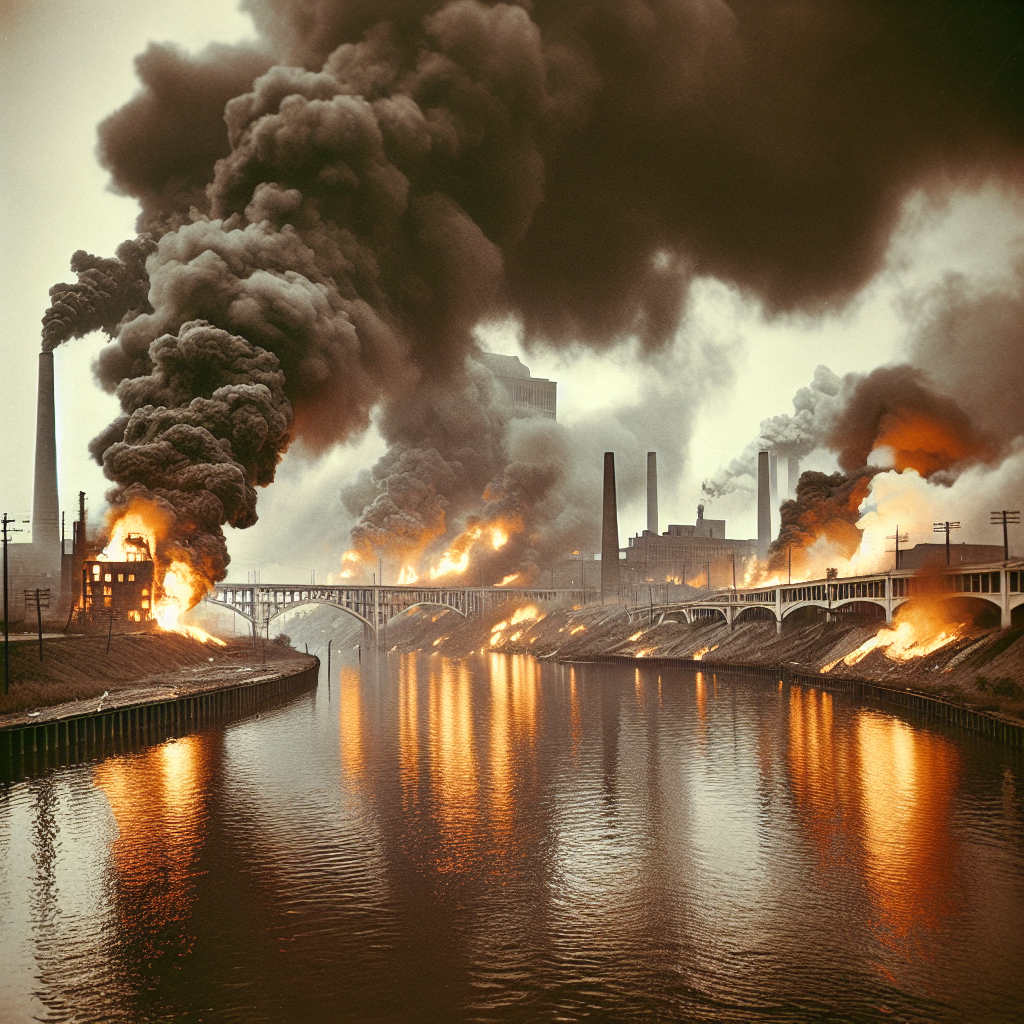
The Time the Cuyahoga River Caught Fire: A Wake-Up Call for Environmental Change
Industrialization played a pivotal role in building the wealth of the United States, but it came at a terrible cost to the environment. Unlike many rivers in industrial cities across the nation, the Cuyahoga River became a notorious dumping ground for waste from factories and sewage. The river was deemed “legally dead” by the time it reached Lake Erie.
The Infamous 1969 Fire
By the time the Cuyahoga River flowed through the Industrial Flats area west of downtown Cleveland in 1969, it was filled with raw sewage, oily chemicals, and random piles of trash. As Larry Buhl described on the Distillations podcast, the river was “just a spark away from disaster.” That spark ignited on Sunday morning, June 22, 1969.
- Flames reportedly shot up five stories high.
- The Cleveland Fire Department managed to extinguish the fire in just 30 minutes.
- Despite previous fires, this incident gained national attention.
Yet, this fire became the mythical event that ignited the environmental movement. It was propelled into the spotlight by an uncaptioned photo and Cleveland’s proactive mayor, who used the incident to highlight wider environmental issues.
The Photo That Amplified Awareness
Seventeen years earlier, a more significant fire on the Cuyahoga caused approximately $1.5 million in damages and was captured by photographers. When Time Magazine wrote about the 1969 fire, they mistakenly used a photo from the 1952 blaze. According to historian John Grabowski, the photo lacked proper labeling and contributed to the 1969 incident’s notoriety.
This photo became pivotal in elevating the fire’s importance, intertwining it with a growing environmental consciousness across America.
The Growing Environmental Awareness
The hosts of Distillations, Alexis Pedrick and Elisabeth Berry Drago, note that other events contributed to the rising environmental movement, but timing and Cleveland’s mayor played crucial roles. Seven years before the fire, Rachel Carson’s ‘The Silent Spring’ exposed the dangers of pesticides, sparking public awareness.
Additionally, six months before the fire, the ‘Earthrise’ photo taken by Apollo 8 astronauts offered a poignant reminder of Earth’s fragility. It became known as “the most influential environmental photograph ever taken.” These events sensitized the public to ecological issues, priming them for change.
Cleveland’s Mayor Makes a Stand
Carl Stokes, Cleveland’s mayor and the first African American mayor of a major US city, was another catalyst. He didn’t ignore the fire; instead, he embraced the opportunity. At a press conference on the riverbanks, he showcased the river’s pollution and urged lawmakers to provide funding to address environmental decay.
- Stokes emphasized air pollution, substandard housing, poverty, and urban environment issues.
- Efforts were already underway, such as a $100 million bond passed the previous year to clean the river.
The Legacy of the Cuyahoga Fire
While the 1969 Cuyahoga fire alone wasn’t the impetus behind a wave of environmental reforms, it was a significant milestone. It highlighted urban decay and heralded a shift in societal consciousness toward preserving the environment. As Larry Buhl noted, the incident turned Cleveland into a point of ridicule, yet out of adversity came change. “It’s a story where something good emerged from something very bad,” Buhl remarks—a narrative Cleveland and the broader nation needed to embrace.
Conclusion
The fire on the Cuyahoga River may have been a minor incident, but its symbolism resonated deeply. It captured the public’s attention, fueled activism, and served as a catalyst for broad policy changes, proving that even a small spark can ignite a powerful movement for change.
Source: https://en.as.com/latest_news/the-time-the-cuyahoga-river-caught-on-fire-in-cleveland-the-fake-news-that-started-an-environmental-revolution-n/

